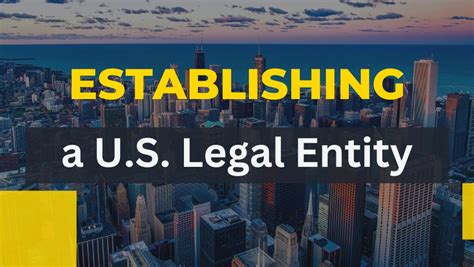Environmental regulations are crucial for safeguarding our planet and public health, yet violations remain a significant issue. This article delves into the complexities of environmental regulation, examining key laws designed to protect the environment and the common types of violations that occur. Through notable case studies, we highlight how these breaches have impacted both the ecosystem and communities. We also explore the legal consequences for offenders, regulatory gaps, and enforcement challenges. Additionally, we consider the role of government agencies in monitoring compliance and look ahead to future trends in environmental regulation. Understanding these elements is vital for improving enforcement and ensuring a sustainable future.
Come join alijyun.com in exploring this topic extensively.
1. Overview of Key Environmental Regulations
Environmental regulations are designed to prevent pollution, protect natural resources, and ensure public health. Key regulations include the Clean Air Act, which sets limits on air pollutants from industrial sources and vehicles; the Clean Water Act, aimed at reducing water pollution and protecting waterways; and the Resource Conservation and Recovery Act, which governs the disposal of hazardous waste. The Endangered Species Act protects threatened and endangered species and their habitats from adverse impacts. Additionally, the National Environmental Policy Act requires federal agencies to assess the environmental impact of their projects before proceeding.
These laws are enforced by agencies such as the Environmental Protection Agency (EPA) and the Department of the Interior. They work to ensure compliance through inspections, permits, and monitoring. Violations of these regulations can lead to significant environmental damage and pose risks to public health. Understanding these key regulations helps in grasping the gravity of compliance and the repercussions of violations, setting the stage for examining specific cases and their legal implications.

2. Common Types of Environmental Violations
Environmental violations can vary widely but typically fall into several common categories. One major type is air pollution violations, which occur when businesses exceed emission limits for pollutants like sulfur dioxide or particulate matter, often due to inadequate control technologies or non-compliance with regulatory permits. Similarly, water pollution violations involve the discharge of pollutants into rivers, lakes, or oceans without proper permits or exceeding allowable limits. This can stem from improper waste treatment or accidental spills.
Hazardous waste violations occur when companies fail to follow regulations for storing, treating, or disposing of dangerous materials, posing risks to both human health and the environment. Land use violations include illegal dumping of waste or development activities that harm protected areas or violate zoning laws.
Another significant area involves violations related to endangered species, where individuals or entities might harm or disrupt habitats of protected wildlife or plants, often due to illegal logging, mining, or construction activities.
These violations often arise from either deliberate disregard for regulations or accidental lapses, but they consistently lead to adverse environmental and health impacts. Addressing these issues requires robust enforcement and compliance measures to mitigate harm and prevent future breaches.

3. Notable Case Studies of Environmental Regulation Violations
One notable case is the Deepwater Horizon oil spill of 2010, one of the largest environmental disasters in U.S. history. BP’s failure to adhere to safety and environmental regulations led to a catastrophic blowout, spilling millions of barrels of oil into the Gulf of Mexico and causing extensive damage to marine and coastal ecosystems.
Another significant case involved the 2014 Elk River chemical spill in West Virginia, where a chemical plant’s violation of safety regulations resulted in a leak of hazardous chemicals into the Elk River, contaminating drinking water for thousands of residents.
In the 2008 Kingston Fossil Plant coal ash spill, a containment failure at a Tennessee power plant led to a massive release of coal ash into the Emory and Clinch Rivers, highlighting shortcomings in hazardous waste management practices and regulatory oversight.
These cases underscore the severe consequences of regulatory non-compliance and illustrate the critical need for stringent enforcement to protect environmental and public health.

4. Legal Consequences and Penalties for Violators
Violating environmental regulations can lead to severe legal consequences and substantial penalties. Fines are a common penalty, with amounts varying based on the severity of the violation and the specific regulation breached. For example, the Clean Air Act and Clean Water Act can impose fines of up to several million dollars per violation, depending on factors such as the duration and extent of the harm.
Criminal charges may also be pursued in cases of willful or egregious violations. Individuals or companies found guilty of knowingly violating environmental laws can face imprisonment, with sentences ranging from a few months to several years. For instance, the Resource Conservation and Recovery Act allows for criminal charges if hazardous waste is improperly managed with malicious intent.
In addition to financial penalties and imprisonment, violators may be subject to civil lawsuits from affected parties or environmental groups, seeking compensation for damages and remedial actions. Courts can mandate cleanup operations, additional monitoring, and compliance measures.
Furthermore, regulatory agencies may impose operational restrictions, such as suspending or revoking permits, which can significantly impact business operations. These legal repercussions are designed to deter non-compliance, ensure accountability, and promote adherence to environmental protection standards.
5. Analysis of Regulatory Gaps and Enforcement Challenges
Despite the robust framework of environmental regulations, several regulatory gaps and enforcement challenges persist. One major issue is the inconsistency in regulatory standards and enforcement across different jurisdictions. States and regions may have varying regulations and enforcement practices, leading to uneven protection and compliance. This disparity can create loopholes that violators exploit to evade stringent oversight.
Another challenge is the limited resources and capacity of regulatory agencies. Agencies like the Environmental Protection Agency often face budget constraints and staffing shortages, hindering their ability to conduct thorough inspections and monitor compliance effectively. This limitation can result in delayed responses to violations and inadequate enforcement.
Additionally, complex regulatory frameworks and technical requirements can make it difficult for both regulators and businesses to navigate and ensure compliance. Small businesses, in particular, may struggle with the administrative burden and costs associated with meeting environmental standards.
Lastly, the rapid pace of industrial and technological advancements often outstrips the regulatory framework, creating gaps where new types of pollution or environmental harm are not adequately addressed. Addressing these gaps requires continuous updates to regulations, improved coordination among agencies, and enhanced resources to support effective enforcement and compliance.
6. Impact of Violations on the Environment and Public Health
Environmental regulation violations can have profound impacts on both the environment and public health. Air pollution violations, such as exceeding emission limits, contribute to smog, acid rain, and respiratory problems. Pollutants like particulate matter and sulfur dioxide can exacerbate asthma, cardiovascular diseases, and other health issues, particularly in vulnerable populations.
Water pollution from illegal discharges contaminates drinking water sources, harming aquatic ecosystems and posing serious health risks to communities. Contaminated water can lead to gastrointestinal illnesses, reproductive problems, and long-term health issues. The effects on wildlife include habitat destruction, fish kills, and disruption of aquatic food chains.
Hazardous waste violations, including improper disposal, can lead to soil and groundwater contamination. This contamination may cause long-term environmental damage, such as the spread of toxic chemicals and heavy metals, affecting plant growth and wildlife. Communities living near improperly managed waste sites are at higher risk of exposure to harmful substances, leading to increased rates of cancer and other serious health conditions.
Land use violations, like illegal dumping or development in protected areas, can destroy critical habitats and biodiversity. The loss of natural habitats can lead to species extinction and reduced ecosystem services, which are vital for maintaining environmental balance and supporting human life. Overall, these violations highlight the urgent need for effective regulation and
7. Legal Defenses and Mitigation Strategies for Accused Parties
Accused parties in environmental regulation cases can employ several legal defenses and mitigation strategies. One common defense is demonstrating compliance with all relevant regulations and permits, showing that any violations were inadvertent or due to misunderstandings. Providing evidence of due diligence in following environmental laws and implementing best practices can also mitigate liability.
Another strategy is to argue that the alleged violation did not cause significant harm or that the harm was less than initially claimed. This involves presenting evidence to minimize the impact and showing efforts made to rectify the situation promptly.
Accused parties may also negotiate settlements or consent decrees with regulatory agencies, which can result in reduced penalties or alternative compliance measures, such as enhanced monitoring or remediation efforts. Engaging in proactive communication with regulators and demonstrating a commitment to correcting violations can further aid in reducing legal consequences and fostering better regulatory relationships.
8. Role of Government Agencies in Monitoring and Enforcement
Government agencies play a crucial role in monitoring and enforcing environmental regulations. The Environmental Protection Agency (EPA) is the primary federal body responsible for overseeing compliance with laws such as the Clean Air Act and Clean Water Act. It conducts inspections, reviews permits, and monitors environmental data to ensure adherence to regulations.
State and local agencies also contribute significantly, managing regional enforcement efforts and addressing local environmental issues. These agencies may carry out on-site inspections, enforce state-specific regulations, and provide technical assistance to businesses and communities.
Regulatory agencies are empowered to impose penalties, issue fines, and mandate corrective actions for violations. They also work to enhance compliance through public education and outreach programs, helping businesses understand and meet their environmental obligations.
Additionally, these agencies collaborate with other governmental and non-governmental organizations to address complex environmental challenges and share information on best practices. Their ongoing efforts are essential for maintaining environmental protection standards and ensuring that violators are held accountable.
9. Future Trends in Environmental Regulation and Compliance
The future of environmental regulation and compliance is likely to be shaped by several emerging trends. One significant trend is the increasing integration of technology in monitoring and enforcement. Advances in remote sensing, satellite imagery, and real-time data analytics are enhancing the ability of regulatory agencies to track environmental conditions and detect violations more efficiently. These technologies allow for more precise monitoring of air and water quality, facilitating quicker responses to potential issues.
Another trend is the growing emphasis on sustainability and climate change mitigation. Regulations are evolving to address greenhouse gas emissions more rigorously and promote renewable energy sources. Policies are being developed to encourage green practices and support industries in reducing their environmental footprint.
Increased public awareness and involvement are also influencing regulatory approaches. There is a rising demand for greater transparency and accountability, leading to more community engagement in environmental decision-making and enhanced scrutiny of corporate practices.
Lastly, there is a shift towards more flexible and adaptive regulatory frameworks. Governments are exploring ways to streamline compliance processes and reduce administrative burdens while still ensuring effective environmental protection. This includes adopting performance-based regulations and fostering collaboration between regulators, businesses, and stakeholders to achieve common environmental goals.
Addressing environmental regulation violations requires a comprehensive understanding of laws, enforcement mechanisms, and the broader impact on health and ecosystems. By examining key regulations, notable cases, and future trends, we can better appreciate the importance of stringent compliance and proactive measures. Continued innovation and collaboration are essential to advancing environmental protection and ensuring a sustainable future.
alijyun.com

